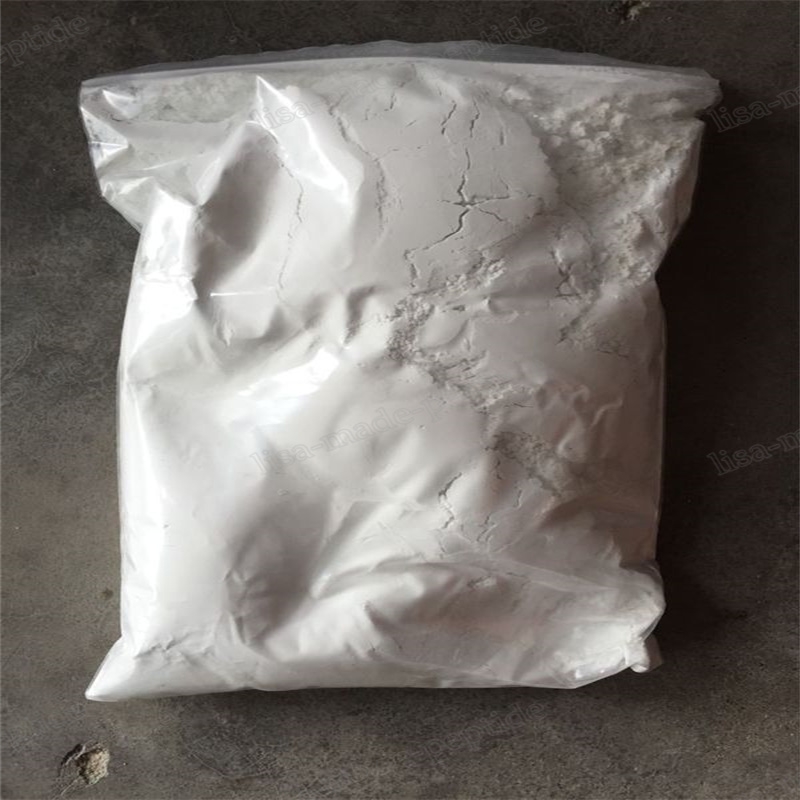-
Categories
-
Pharmaceutical Intermediates
-
Active Pharmaceutical Ingredients
-
Food Additives
- Industrial Coatings
- Agrochemicals
- Dyes and Pigments
- Surfactant
- Flavors and Fragrances
- Chemical Reagents
- Catalyst and Auxiliary
- Natural Products
- Inorganic Chemistry
-
Organic Chemistry
-
Biochemical Engineering
- Analytical Chemistry
-
Cosmetic Ingredient
- Water Treatment Chemical
-
Pharmaceutical Intermediates
Promotion
ECHEMI Mall
Wholesale
Weekly Price
Exhibition
News
-
Trade Service
[ Focus on Chemical Machinery Equipment Network ] As the basic core component of the new technological revolution and the information society, the sensor is a vital functional device for data collection.
The continuous collection of data is the sensory, transmission and processing information system.
The fresh "blood" of interest
.
Chemical machinery equipment network hotspots focus on chemical machinery equipment sensorsThe continuous collection of data is the sensory, transmission and processing information system.
The fresh "blood" of interest
.
As a high-profile sub-industry in the instrumentation industry, the development of China's sensor industry is in the ascendant.
It is estimated that in 2021, China's sensor market will reach a scale of nearly 300 billion yuan
.
InstrumentationIt is estimated that in 2021, China's sensor market will reach a scale of nearly 300 billion yuan
.
Insight into the new trend of sensor development, mainly presenting the "six modernizations" characteristics of intelligence, miniaturization, integration, localization, clustering, and customization
.
.
In this article, I will mainly explain the three major characteristics of "localization, clustering, and customization" among the "six modernizations"
.
.
Localization
The increasing rate of localization of sensors is an inevitable trend in the development of sensors in China
.
.
After years of development, China's sensor industry has now formed a relatively complete industrial system and technological innovation system; however, there is still a gap compared with developed countries in Europe and America, especially high-end sensors have long been constrained by others, and the key technology "stuck neck" phenomenon should not be underestimated, especially It is the high-end sensors in the fields of smart cars and scientific instruments that have occupied many market shares by European and American companies
.
.
For this reason, breaking through the bottleneck restriction of the key technology of high-end sensors, striving to fight for the core technology of high-end sensors, and achieving effective domestic substitution, resolutely embarking on a road of localization of the high-end sensor industry is both an urgent matter and a general trend
.
.
In recent years, with policy support, technological innovation and capital blessing, the development of China’s sensor industry has been surging, such as Goertek, Huatian Technology, Silan Microelectronics, Aerospace Electronics, Inovance Technology, Wanxun Automation, Hanwei Technology, etc.
A large number of high-quality sensor companies have come to the fore, and domestically produced mid-to-high-end sensors have become a substitute for stroke
.
A large number of high-quality sensor companies have come to the fore, and domestically produced mid-to-high-end sensors have become a substitute for stroke
.
It is foreseeable that with the continuous improvement of the integration level of the upstream, middle and downstream sensor industry chains in China and the increasingly complete technological innovation system of "production, study, research and application", we will find the right sensor, especially the high-end sensor, to "stuck the neck" key technology breakthrough path , China's sensor industry optimization and upgrading of domestic substitution road will go wider and wider
.
.
Clustering
The clustered layout of the sensor industry is a significant trend in China's sensor development
.
.
Looking at the distribution pattern of China's sensor industry, five major industrial clusters have been initially created in the Yangtze River Delta, Pearl River Delta, Beijing-Tianjin-Hebei, Midwest and Northeast China
.
Statistics show that in the composition and distribution of listed sensor companies, sensor companies from the Yangtze River Delta region account for nearly 40%; the rest are sensor companies from the Pearl River Delta, Beijing-Tianjin-Hebei, Midwest and Northeast China, which account for roughly Quite
.
.
Statistics show that in the composition and distribution of listed sensor companies, sensor companies from the Yangtze River Delta region account for nearly 40%; the rest are sensor companies from the Pearl River Delta, Beijing-Tianjin-Hebei, Midwest and Northeast China, which account for roughly Quite
.
As far as the smart sensor industry is concerned, the smart sensor industry clusters in the Yangtze River Delta, focusing on Shanghai, Jiangsu, and Zhejiang, are already quite impressive
.
It is said that more than 50% of domestic smart sensor companies have now gathered in the Yangtze River Delta region, which has become the core agglomeration area of China's smart sensor industry
.
.
It is said that more than 50% of domestic smart sensor companies have now gathered in the Yangtze River Delta region, which has become the core agglomeration area of China's smart sensor industry
.
Shanghai Jiading, as the "North Wing" in the "One Body and Two Wings" planning layout of Shanghai's integrated circuit industry, strives to build the entire smart sensor industry chain, vigorously builds the Shanghai smart sensor industrial park, and builds smart sensor innovation highlands and industrial clusters.
The area has already gathered intelligence.
There are more than 200 sensor and Internet of Things companies, and the output value is expected to exceed 100 billion yuan in 2025
.
The area has already gathered intelligence.
There are more than 200 sensor and Internet of Things companies, and the output value is expected to exceed 100 billion yuan in 2025
.
As the core area of Wuxi's Internet of Things industry, Jiangsu Wuxi High-tech Zone is the first high-tech zone in the country to take the smart sensor industry and other Internet of Things technologies and applications as strategic emerging industries
.
Wuxi High-tech Zone has now established a relatively complete intelligent sensor industry system.
In terms of R&D, design, manufacturing, follow-up industrial applications and component support, it has brought together top domestic scientific research teams such as the Chinese Academy of Sciences and many leading companies
.
.
Wuxi High-tech Zone has now established a relatively complete intelligent sensor industry system.
In terms of R&D, design, manufacturing, follow-up industrial applications and component support, it has brought together top domestic scientific research teams such as the Chinese Academy of Sciences and many leading companies
.
Zhejiang Province, as China's smart sensor industry development key cluster area, the country's first sensor industrialization base and the country's first domestic listed integrated circuit manufacturer Silan Microelectronics is headquartered in Hangzhou, SMIC manufacturing and the world's leading integrated circuit manufacturing and technical services.
Commercial Changdian Technology settled in Shaoxing, and the agglomeration effect of Zhejiang Province's smart sensor industry was evident from this
.
Commercial Changdian Technology settled in Shaoxing, and the agglomeration effect of Zhejiang Province's smart sensor industry was evident from this
.
At the same time, the Pearl River Delta, Beijing-Tianjin-Hebei, Central and Western China, and Northeast China are competing to build smart sensor development highlands, striving to occupy the commanding heights of the smart sensor industry, and the smart sensor industrial park is showing a prairie fire
.
.
Beijing lists the high-end instrument equipment and sensor industry as one of the city’s top ten high-tech industry Build Beijing International Science and Technology Innovation Center and build a sophisticated economic structure to provide strong support
.
.
The first Guangdong-Hong Kong-Macao Greater Bay Area Smart Sensor Industrial Park in Guangdong Province was recently unveiled.
The total area of the industrial park is about 107,900 square meters, with a total investment of 2.
68 billion yuan.
A batch of smart sensor "specialization, special and new" projects have been signed.
The scale is nearly 10 billion yuan
.
The total area of the industrial park is about 107,900 square meters, with a total investment of 2.
68 billion yuan.
A batch of smart sensor "specialization, special and new" projects have been signed.
The scale is nearly 10 billion yuan
.
Zhengzhou will build the Smart Sensing Valley Startup Zone, covering an area of 337 acres, with a total investment of about 10 billion yuan.
Sensing application sharing experience area
.
Sensing application sharing experience area
.
Customization
The trend of sensor customization is increasingly emerging, and the road to customization of the sensor industry is long and wide
.
.
Due to factors such as complex functions and wide range of application scenarios, the sensor can be said to have its own customized features, and its customized solutions are both deep and detailed
.
.
The flexible customization requirements of sensors are large, and the research and development cycle is long, and the materials and processes are very complicated
.
Traditional standard sensors are obviously difficult to meet the design requirements of OEMs, and it is also difficult to meet the application preferences of end users.
Some smart phone manufacturers have cooperated with sensor companies such as Sony and Samsung to customize sensors
.
.
Traditional standard sensors are obviously difficult to meet the design requirements of OEMs, and it is also difficult to meet the application preferences of end users.
Some smart phone manufacturers have cooperated with sensor companies such as Sony and Samsung to customize sensors
.
With the increasing breadth and depth of sensors in IoT application scenarios, more sensor functions and design details will appear.
From this perspective, sensor companies with customized sensor solutions and flexible production capabilities will be able to obtain OEM manufacturers.
Of great interest
.
From this perspective, sensor companies with customized sensor solutions and flexible production capabilities will be able to obtain OEM manufacturers.
Of great interest
.
Original Title: Insights: New Trends in Sensor Development







